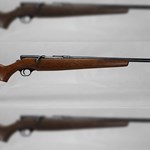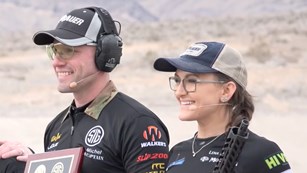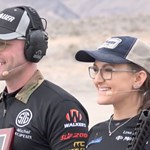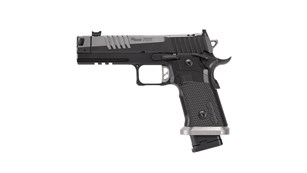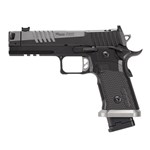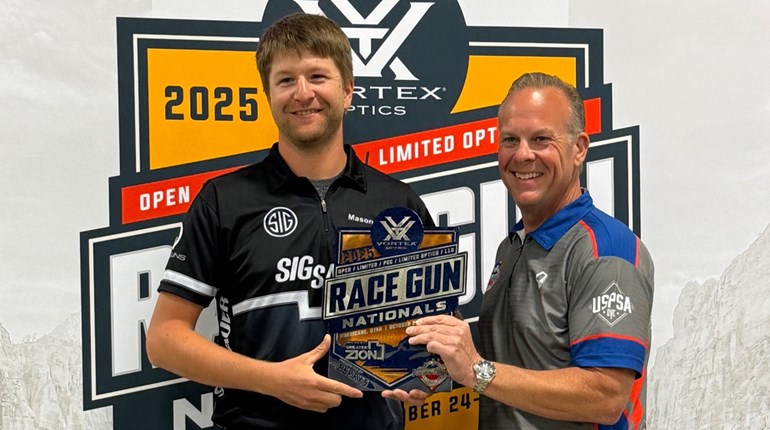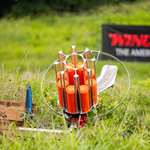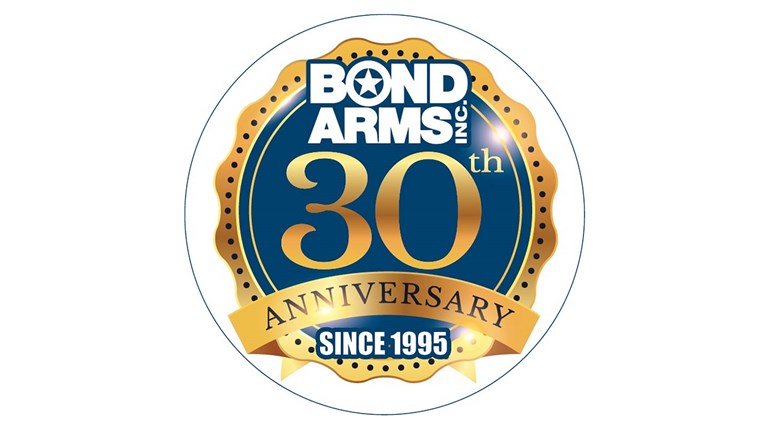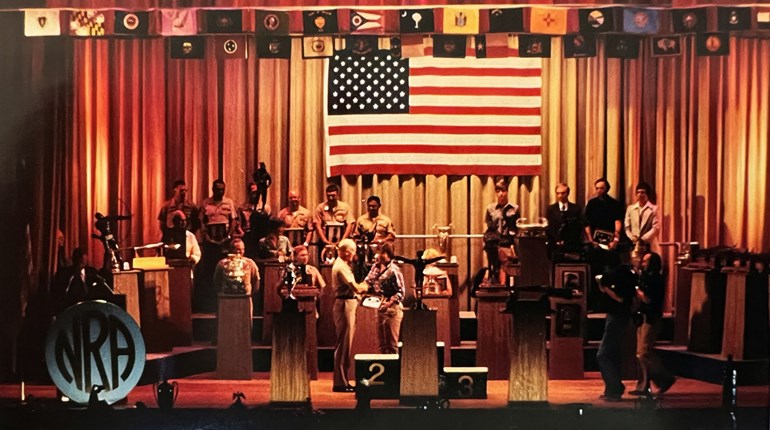
Action-pistol competition, whether USPSA, IDPA or ICORE, is normally considered to be a two-fisted, run-and-gun event. When the buzzer sounds, use a two-hand grip and rip through the targets and shooting positions. That’s how it goes most of the time. But not always.
It’s not uncommon for a course of fire (COF) to require shooting with the weakhand only (WHO) for some, or even all, of a stage. It doesn’t happen often. But when it does, it can quickly remove an unprepared shooter from their comfort zone and end any hope they had of landing on the high side of the leaderboard.
Here’s how to move weak-hand only shooting into your comfort zone.
Every shooter has a stance they prefer. But when everything shifts to the weak side, and only one hand is now involved, that stance goes out the window. Weak-hand only needs its own stance and one that is geared to controlling recoil. An aggressive, forward-driving stance has proven highly effective. With the gun in the weak hand, drive the gun hand’s foot forward 15 to 18 inches with a slight bend in the knee. It’s just like throwing a hard straight punch. At the same time, clench the other hand into a fist and plant it in the center of the chest. This tenses the upper body and tightens the muscles. The combination of aggressive forward drive and locked arm, with tensed upper body muscles, reduces muzzle rise on recoil and speeds sight recovery. This power forward/clenched fist stance is also very effective for strong-hand only shooting, which will also crop up from time to time.
The only potential drawback to this weak-hand stance is that some shooters with a strongly dominant eye may have trouble—even with both eyes open—getting the sights properly in view. Moving the gun slightly inward towards the center of the body and the dominant eye will help with that, but does put a bend in the rigid arm and, for some, increase muzzle rise and recovery time.
There are two other options for getting the dominant eye behind the sights that, while sounding rather unorthodox, have proven to be effective.
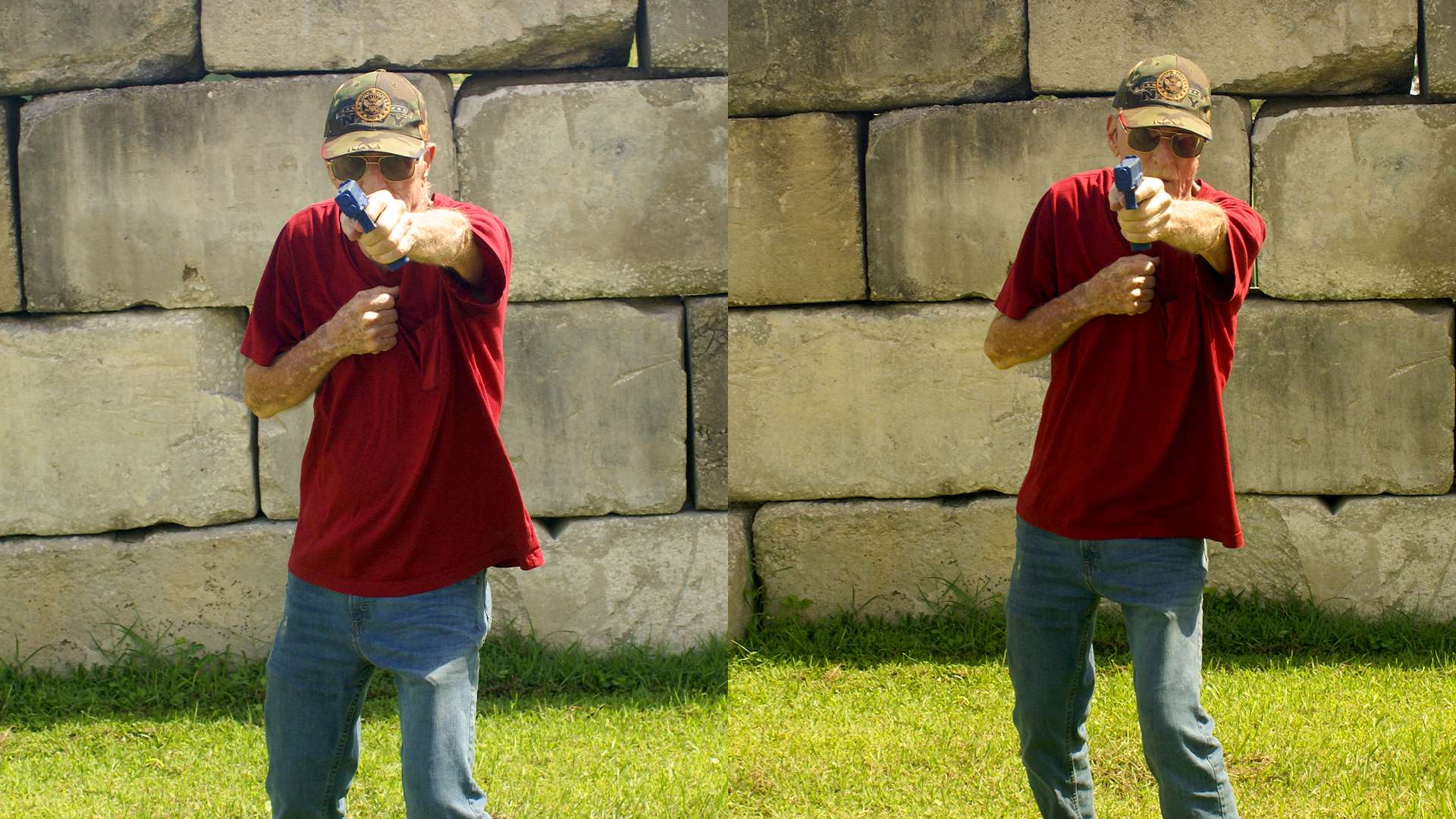
William “Bill” McMillan was a US Marine Corps Team shooter competing in ISSF Rapid Fire and Free Pistol, who also happened to be cross dominant. His solution was to cant the pistol about 45 degrees inward toward his dominant eye. It became known as the “McMillan Cant,” or as some waggishly refer to it, the “half-homey grip.” It was decidedly unorthodox, but McMillan used it to win two World Championships in the accuracy intensive game of 50-meter Free Pistol, five gold medals in Pan American Games, along with four national titles in Free Pistol and one in Rapid Fire. At the Rome 1960 Summer Olympics, he won the Gold Medal in the 25-meter Rapid Fire Pistol event. He was inducted into the USA Shooting Hall of Fame in 1994. The “half-homey grip” worked for Bill.
A different technique was used by Col. Jeff Cooper, who is often referred to as the father of modern pistol craft. Not many know it, but Cooper was right-hand/left-eye dominant. He shot with his right hand and simply turned his head to the right to bring his dominant eye behind the sight. It’s clearly visible in photos taken of him on the range. This simple head turn is quite easy to do when shooting weak hand.
Once a shooter becomes comfortable with the weak-hand stance, the next issue becomes how the shooter gets the pistol into the weak hand.
Sometimes weak-hand only will occur at the beginning of the stage with a table start, or some other off body gun position that has the shooter pick up the gun and begin firing. This is simple and straightforward. On other occasions, the gun may begin the course of fire in a strong-hand grip and at some point be required to shift the weak hand for weak-hand only shooting.

Shifting a loaded handgun from one hand to the other while on the clock is not a complicated procedure, but it’s one that should not be taken lightly. If the gun has a manual safety, it can certainly be slipped on as an added safety factor, although flipping it back of in a weak-hand grip will add some time to the shift. Beyond the manipulating the safety, the shift breaks down into a simple four-step process.
With a two-hand freestyle grip, the first step is to move the trigger finger into the register position on the frame above the trigger guard. Step two is to raise both thumbs upward and outward to form an open V, while at the same time slightly opening the two palms. This leaves the gun supported by the fingers with only a slight palm pressure. Step three brings the weak-hand thumb curling around the rear of the gun. Step four is lock the weak-hand thumb down and into the shooting grip while the strong-hand fingers slide back and away from the gun, allowing the weak-hand fingers to close to assume the grip.

This is easily practiced at home with an empty gun and doesn’t take long to master. It may sound slow, but I have run range tests by firing one round strong-hand freestyle, making the shift and then immediately firing an accurate aimed round weak hand. The split times are right around one second.
This hand shift doesn’t have to be restricted to weak-hand only shooting. It can come in handy during freestyle as well. I remember one IDPA match where a left-handed match director decided to mess with the right-hand shooters. One stage started at the left side of a barricade (with fault lines). There were three targets. Two were out to the left and easy for right-handed shooters to get to. But the third target was tucked in well behind the barricade and was extremely difficult for a right-hand shooter to reach without a foot fault. I watched several shooters waste valuable time trying to jiggle into position, so I just took the first two targets right-hand freestyle, made the gun shift to the left hand for the third, shifted back to right-hand freestyle and was on my way to the next position. I won that stage easily.
Match Directors can be devious at times. But shooters who are prepared to compete with either hand can often thwart them.






